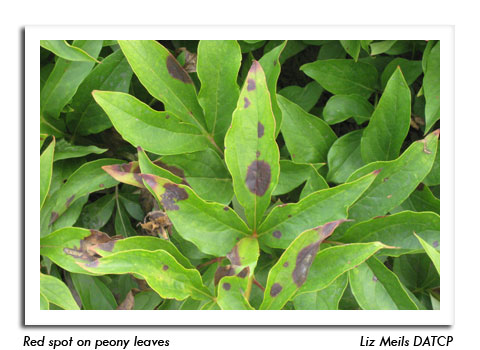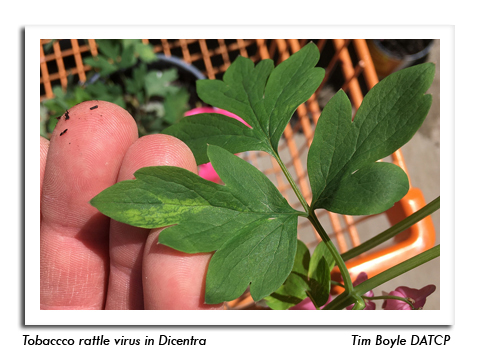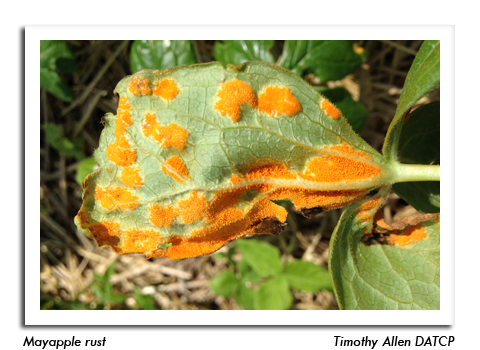
 |
|
|
Nursery & Forest
Volume 63 Number 5 Date 05/31/2018 RED SPOT ON PEONY - Peonies at garden centers in Jackson, Monroe, and Trempealeau counties were infected with this fungal disease, characterized by small, circular, reddish or purplish leaf spots that appear on the upper surfaces of young leaves shortly before bloom. Later in the season, the lesions expand and merge to form large, irregular blighted areas. All above-ground parts of the peony are susceptible to red spot. Red spot is an aesthetic problem controlled by cutting back plants to ground level in fall and destroying infected foliage. Fungicides labeled for peony red spot are preventive and must be applied early in spring, when new shoots are 2-4 inches tall. Subsequent applications may be needed until the flowers begin to open. ROOT-BORNE ISSUES - Several root-related plant maladies, favored by very warm temperatures and increased soil moisture, were recently noted by inspectors. Astilbe plants were diagnosed with root knot nematode (Meloidogyne sp.) and Rhizoctonia root rot, while prairie dropseed tested positive for Fusarium and Phoma root rots, with the latter related to maggots within the seed of the plant. FLEA BEETLES - This common pest of many vegetables and nursery plants was observed at several retail garden centers in the past week, feeding on leafy seedlings and shrubs. Defoliation caused by flea beetles varies by leaf type and the flea beetle species involved, appearing as shot-holes, skeletonizing or lacy shredding on thinner leaves and a linear, leafminer-like pattern on the thicker, fleshy leaves of sedum and similar plants. Row covers, sticky traps, and insecticides may be used for prevention and treatment. NON-VIABLE NURSERY STOCK - Most nursery plants that have not leafed out by now are considered non-viable and cannot be sold. Dry bulbs and trees and shrubs with plastic-wrapped roots are especially prone to moisture deficiency problems after distribution to retail stores and should be sold within three weeks of arrival. Non-viable stock may be set aside and observed for later growth, but otherwise must be destroyed or returned to the supplier. PLANT VIRUSES - Potyviruses were again common in nursery samples, with several varieties of Iris, freesia, and sneezeweed testing positive from nursery dealers in Dane, Kenosha, Monroe, and Washington counties. Tobacco rattle virus was detected among box-store Dicentra plants in Kenosha and Monroe counties. Viral symptoms typically begin as subtle light and dark green streaks or mottled patterns along the plant foliage, which can turn necrotic and increase susceptibility to other secondary diseases. As previously stated, industry-wide attention to selecting and maintaining virus-free breeding stock, consumer education to recognize plant virus symptoms, and the removal and proper disposal of infected plant materials are imperative for control. MAYAPPLE RUST - Bright orange pustules were evident on the undersides of mayapples in La Crosse County. This annually occurring rust is very common in natural settings where it sporadically causes premature leaf drop. Removing infected plants may aid in control by reducing the source of inoculum. -- Tim Boyle, DATCP Nursery Inspector 




|
|
|